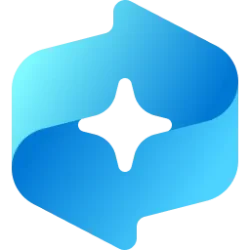My new computer arrived with one hard drive. I partitioned that hard drive in the typical way: C for SYSTEM and D for DATA. Then I moved my user folders from C to D. Everything worked fine.
Eventually, I bought a second hard drive and called it F. My goal is to use the original hard drive for my system, and the new hard drive for my data. To begin, I moved all my user folders from D to F. Everything worked fine.
Next, I went into Disk Management and deleted the now empty D partition. Then I expanded C into the empty space. So now I have two physical hard drives: C and F. So far, all good.
In Disk Management, I changed the drive letter of the second physical hard drive from F to D, because I always store my data in the D drive. But after a restart, Windows was still looking for my user folders in F - which no longer existed. As a result, Windows didn't know where to find my user folders. Once I changed the D drive back to F, everything was back to normal.
How can I rename my F drive to D? Thanks very much for your help.
Eventually, I bought a second hard drive and called it F. My goal is to use the original hard drive for my system, and the new hard drive for my data. To begin, I moved all my user folders from D to F. Everything worked fine.
Next, I went into Disk Management and deleted the now empty D partition. Then I expanded C into the empty space. So now I have two physical hard drives: C and F. So far, all good.
In Disk Management, I changed the drive letter of the second physical hard drive from F to D, because I always store my data in the D drive. But after a restart, Windows was still looking for my user folders in F - which no longer existed. As a result, Windows didn't know where to find my user folders. Once I changed the D drive back to F, everything was back to normal.
How can I rename my F drive to D? Thanks very much for your help.
- Windows Build/Version
- Windows 11 Pro 22H2 Build 22621
Last edited:
My Computer
System One
-
- OS
- Windows 11
- Computer type
- PC/Desktop
- Manufacturer/Model
- Dell 8960
- CPU
- Intel Core i7-13700K Dell OEM
- Motherboard
- Dell OEM
- Memory
- 32 GB DDR5 4800 MHz (Crucial)
- Graphics Card(s)
- NVIDIA GeForce GTX 1650 SUPER Dell OEM
- Monitor(s) Displays
- Dell P2719H
- Screen Resolution
- 1920 x 1080
- Hard Drives
- NVMe M.2 PCI SSD
- PSU
- 750 watts Dell OEM
- Case
- Dell OEM
- Cooling
- Tower air cooler Dell OEM
- Keyboard
- Logitech K360
- Mouse
- Logitech M330
- Internet Speed
- 300 Mbps
- Browser
- Google Chrome
- Antivirus
- BitDefender





